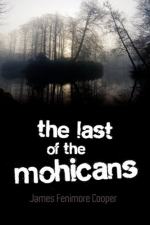|
This section contains 6,320 words (approx. 22 pages at 300 words per page) |

|
SOURCE: "Women and Indians: The Last of the Mohicans and the Captivity Tradition," in American Quarterly, Vol. XXXVIII, No. 4, Fall, 1976, pp. 431-43.
In the following essay, Haberly considers the influence of the captivity genre on James Fenimore Cooper's portrayal of femininity in The Last of the Mohicans.
Despite considerable new interest in narratives of Indian captivity, this large genre remains somewhat isolated within American literary history—more interesting to bibliographers and ethnohistorians than to critics.1 Some recent studies of captivity narratives have ably elaborated basic ideas first presented by Roy Harvey Pearce a generation ago; new and highly imaginative approaches to the captivities have also been attempted, but the critics' eagerness to fit one or more narratives into universal mythic structures or into psychosexual theories of American culture has often distracted them from the fundamental question about the captivities—the specific influence of this vast and enormously popular...
|
This section contains 6,320 words (approx. 22 pages at 300 words per page) |

|


